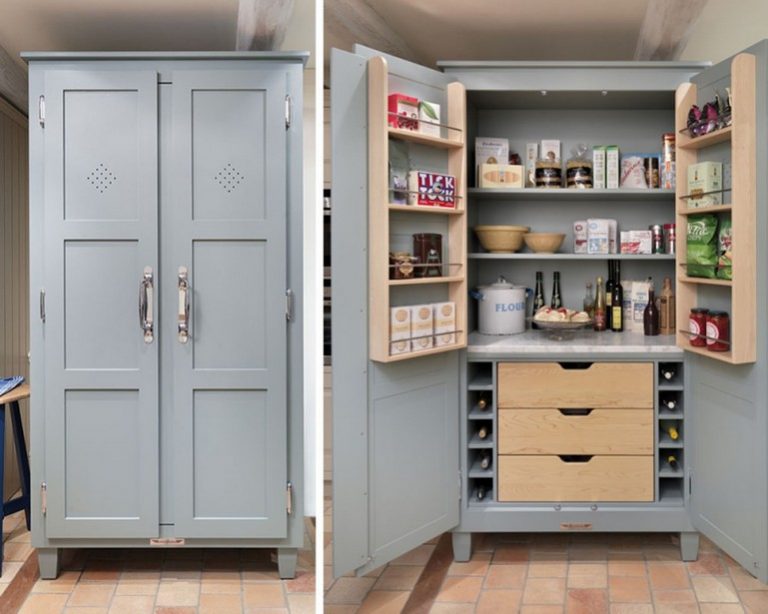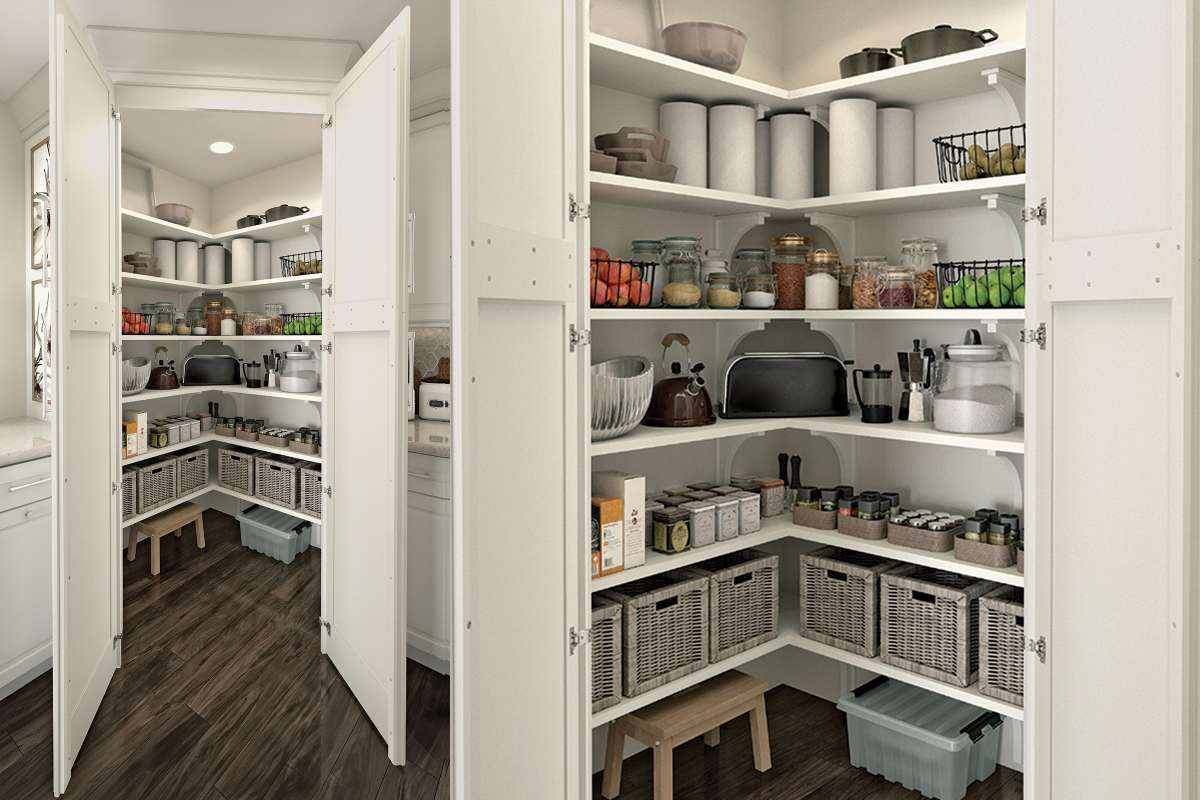Understanding the Target Audience and Needs: Target Food Pantry Cabinet

Food pantry cabinets are a vital part of any household, but they are especially crucial for individuals and families who rely on food banks or community food pantries. These cabinets serve as the cornerstone of efficient food storage and organization, ensuring that valuable resources are utilized effectively and remain readily accessible.
Demographics of the Target Audience, Target food pantry cabinet
The target audience for food pantry cabinets encompasses a diverse group of individuals and families, each facing unique challenges in managing their food supplies.
- Low-income households: These families often face financial constraints that limit their ability to purchase food in bulk or frequently. Food pantry cabinets can help them maximize their limited resources by providing efficient storage solutions.
- Individuals and families with limited kitchen space: Food pantry cabinets offer a practical solution for maximizing storage capacity in compact kitchens, ensuring that all food items are easily accessible and organized.
- Seniors and individuals with mobility limitations: These individuals often benefit from cabinets that offer easy access to food items, minimizing the need for bending or reaching, thus promoting independence and safety.
- Large families: Food pantry cabinets provide ample storage space for large families, accommodating their increased food needs and promoting organized storage practices.
Needs and Challenges of the Target Audience
The target audience for food pantry cabinets faces several specific needs and challenges related to food storage and organization.
- Accessibility: Easy access to food items is crucial for individuals with limited mobility or those who rely on food pantries. Food pantry cabinets should be designed with adjustable shelves, pull-out drawers, and ergonomic features to ensure comfortable and convenient access.
- Durability: Food pantry cabinets must withstand frequent use and the weight of heavy food items. Durable materials like steel, wood, or laminated surfaces are preferred, ensuring longevity and resistance to wear and tear.
- Space Efficiency: Maximizing storage space is essential for individuals and families with limited kitchen space. Food pantry cabinets should offer various storage options, such as shelves, drawers, and bins, to accommodate diverse food items and maximize space utilization.
- Organization: Maintaining a well-organized food pantry is essential for efficient food management and preventing waste. Food pantry cabinets should include features like clear containers, labeling systems, and dividers to promote a structured and organized storage environment.
Key Features and Considerations
A well-designed food pantry cabinet is an investment in both convenience and organization. By understanding the essential features and design considerations, you can choose a cabinet that perfectly suits your needs and helps you maximize your food storage space.
Essential Features
The essential features of a food pantry cabinet aim to provide efficient storage, easy access, and optimal food preservation. Here are some key elements to consider:
- Adjustable Shelves: Adjustable shelves offer the flexibility to accommodate items of varying heights, maximizing vertical space and ensuring that all items are easily accessible.
- Pull-Out Drawers: Pull-out drawers provide easy access to items stored at the back of the cabinet. They are particularly useful for storing smaller items, such as spices, snacks, or canned goods.
- Integrated Lighting: Integrated lighting illuminates the interior of the cabinet, making it easy to see and locate items, even in low-light conditions.
Materials Used in Construction
The choice of material for your food pantry cabinet will impact its durability, aesthetics, and cost. Common materials include:
- Wood: Wood cabinets offer a classic and elegant look, and are often chosen for their durability and warmth. They can be stained or painted to match any decor. However, wood can be susceptible to scratches and moisture damage.
- Metal: Metal cabinets are known for their durability and resistance to moisture and scratches. They are often more affordable than wood cabinets and come in a variety of finishes, including stainless steel, powder-coated, and painted.
- Laminate: Laminate cabinets offer a cost-effective and durable option. They are available in a wide range of colors and finishes to match any style. Laminate is also easy to clean and maintain.
Design Considerations for Optimization
Optimizing your food pantry cabinet design involves maximizing storage space and minimizing waste. Consider the following:
- Maximizing Storage Space: Utilize vertical space by installing shelves that reach the ceiling. Consider using corner shelves or pull-out shelves to maximize space in tight corners.
- Minimizing Waste: Implement a first-in, first-out (FIFO) system for your food storage. Store items that expire soonest in the front and easily accessible locations. This helps prevent food waste and ensures that you use items before they expire.
Popular Food Pantry Cabinet Designs and Styles

Food pantry cabinets come in various designs and styles, offering a wide range of options to suit different kitchen aesthetics and storage needs. Understanding the advantages and disadvantages of each design and style will help you choose the perfect pantry cabinet for your home.
Freestanding Food Pantry Cabinets
Freestanding food pantry cabinets are independent units that can be placed anywhere in the kitchen. They offer flexibility and portability, allowing you to rearrange your kitchen layout as needed.
- Advantages: Freestanding cabinets are easy to install, requiring no major modifications to your kitchen. They are also relatively inexpensive compared to built-in options.
- Disadvantages: Freestanding cabinets may not be as spacious as built-in options and can take up more floor space. They can also be less stable than built-in cabinets, especially in areas with high traffic.
Built-in Food Pantry Cabinets
Built-in food pantry cabinets are integrated into the kitchen design, creating a seamless and streamlined look. They are often custom-made to fit the available space and offer maximum storage capacity.
- Advantages: Built-in cabinets offer ample storage space and can be customized to meet specific needs. They are also more stable than freestanding cabinets and can be integrated with other kitchen features, such as countertops and appliances.
- Disadvantages: Built-in cabinets require professional installation and can be more expensive than freestanding options. They also require more planning and design considerations.
Modular Food Pantry Cabinets
Modular food pantry cabinets are pre-designed units that can be assembled and configured in various ways. They offer flexibility and customization, allowing you to create a pantry that fits your specific space and storage requirements.
- Advantages: Modular cabinets are relatively easy to install and can be reconfigured as needed. They offer a wide range of sizes and styles to choose from, allowing you to create a pantry that fits your budget and preferences.
- Disadvantages: Modular cabinets may not be as spacious as built-in options and can be more expensive than freestanding cabinets.
Traditional Food Pantry Cabinets
Traditional food pantry cabinets are characterized by their classic and timeless design. They often feature ornate details, such as raised panels, decorative moldings, and brass hardware.
- Advantages: Traditional cabinets add a touch of elegance and sophistication to the kitchen. They can complement traditional and transitional kitchen styles, creating a warm and inviting atmosphere.
- Disadvantages: Traditional cabinets can be more expensive than modern cabinets and may not be suitable for contemporary kitchens.
Modern Food Pantry Cabinets
Modern food pantry cabinets are characterized by their sleek and minimalist design. They often feature clean lines, simple shapes, and contemporary materials, such as stainless steel and glass.
- Advantages: Modern cabinets offer a clean and contemporary look that complements modern and minimalist kitchen styles. They are also typically durable and easy to maintain.
- Disadvantages: Modern cabinets may not be as versatile as traditional cabinets and can be more expensive.
Farmhouse Food Pantry Cabinets
Farmhouse food pantry cabinets are characterized by their rustic and charming design. They often feature distressed wood finishes, decorative hardware, and open shelving.
- Advantages: Farmhouse cabinets add a touch of warmth and charm to the kitchen. They can complement farmhouse, rustic, and country kitchen styles, creating a cozy and inviting atmosphere.
- Disadvantages: Farmhouse cabinets can be more expensive than modern cabinets and may not be suitable for contemporary kitchens.
A well-organized target food pantry cabinet is a testament to efficient food management, ensuring that every item is easily accessible and readily available. For a touch of timeless elegance and durability, consider incorporating a wood and rattan cabinet into your pantry design.
This blend of natural materials adds a warm, inviting ambiance while providing ample storage space for all your culinary essentials, making your pantry a haven of culinary organization.
When organizing your target food pantry cabinet, remember that space is precious. You might find yourself wondering, “how wide is an oven cabinet?” how wide is an oven cabinet is a crucial consideration for efficient kitchen design, and the same principles apply to your pantry.
Maximize your pantry’s storage capacity by strategically utilizing vertical space and grouping similar items together.
